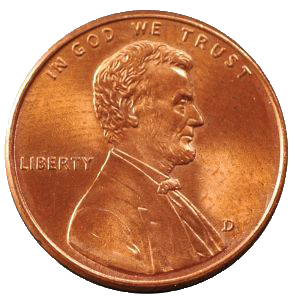We know that probability is a number between 0 and 1. How does an event get assigned a particular probability value? Well, there are three ways of doing so:
- the personal opinion approach
- the relative frequency approach
- the classical approach
On this page, we'll take a look at each approach.
The Personal Opinion Approach Section
This approach is the simplest in practice, but therefore it also the least reliable. You might think of it as the "whatever it is to you" approach. Here are some examples:
- "I think there is an 80% chance of rain today."
- "I think there is a 50% chance that the world's oil reserves will be depleted by the year 2100."
- "I think there is a 1% chance that the men's basketball team will end up in the Final Four sometime this decade."
Example 2-4 Section
At which end of the probability scale would you put the probability that:
- one day you will die?
- you can swim around the world in 30 hours?
- you will win the lottery someday?
- a randomly selected student will get an A in this course?
- you will get an A in this course?
Answer
I think we'd all agree that the probability that you will die one day is 1. On the other hand, the probability that you can swim around the world in 30 hours is nearly 0, as is the probability that you will win the lottery someday. I am going to say that the probability that a randomly selected student will get an A in this course is a probability in the 0.20 to 0.30 range. I'll leave it to you think about the probability that you will get an A in this course.The Relative Frequency Approach Section
The relative frequency approach involves taking the follow three steps in order to determine P(A), the probability of an event A:
- Perform an experiment a large number of times, n, say.
- Count the number of times the event A of interest occurs, call the number N(A), say.
- Then, the probability of event A equals:
\(P(A)=\dfrac{N(A)}{n}\)
The relative frequency approach is useful when the classical approach that is described next can't be used.
Example 2-5 Section

When you toss a fair coin with one side designated as a "head" and the other side designated as a "tail", what is the probability of getting a head?
Answer
I think you all might instinctively reply \(\dfrac{1}{2}\). Of course, right? Well, there are three people who once felt compelled to determine the probability of getting a head using the relative frequency approach:
| Coin Tosser |
n, the number of tosses made |
N(H), the number of heads tossed | P(H>) |
| Count Buffon | 4,040 | 2,048 | 0.5069 |
| Karl Pearson | 24,000 | 12,012 | 0.5005 |
| John Kerrich | 10,000 | 5,067 | 0.5067 |
As you can see, the relative frequency approach yields a pretty good approximation to the 0.50 probability that we would all expect of a fair coin. Perhaps this example also illustrates the large number of times an experiment has to be conducted in order to get reliable results when using the relative frequency approach.
By the way, Count Buffon (1707-1788) was a French naturalist and mathematician who often pondered interesting probability problems. His most famous question
Suppose we have a floor made of parallel strips of wood, each the same width, and we drop a needle onto the floor. What is the probability that the needle will lie across a line between two strips?
came to be known as Buffon's needle problem. Karl Pearson (1857-1936) effectively established the field of mathematical statistics. And, once you hear John Kerrich's story, you might understand why he, of all people, carried out such a mind-numbing experiment. He was an English mathematician who was lecturing at the University of Copenhagen when World War II broke out. He was arrested by the Germans and spent the war interned in a prison camp in Denmark. To help pass the time he performed a number of probability experiments, such as this coin-tossing one.
Example 2-6 Section

Some trees in a forest were showing signs of disease. A random sample of 200 trees of various sizes was examined yielding the following results:
| Type | Disease free | Doubtful | Diseased | Total |
|---|---|---|---|---|
| Large | 35 | 18 | 15 | 68 |
| Medium | 46 | 32 | 14 | 92 |
| Small | 24 | 8 | 8 | 40 |
| Total | 105 | 58 | 37 | 200 |
What is the probability that one tree selected at random is large?
Answer
There are 68 large trees out of 200 total trees, so the relative frequency approach would tell us that the probability that a tree selected at random is large is 68/200 = 0.34.
What is the probability that one tree selected at random is diseased?
Answer
There are 37 diseased trees out of 200 total trees, so the relative frequency approach would tell us that the probability that a tree selected at random is diseased is 37/200 = 0.185.
What is the probability that one tree selected at random is both small and diseased?
Answer
There are 8 small, diseased trees out of 200 total trees, so the relative frequency approach would tell us that the probability that a tree selected at random is small and diseased is 8/200 = 0.04.
What is the probability that one tree selected at random is either small or disease-free?
Answer
There are 121 trees (35 + 46 + 24 + 8 + 8) out of 200 total trees that are either small or disease-free, so the relative frequency approach would tell us that the probability that a tree selected at random is either small or disease-free is 121/200 = 0.605.
What is the probability that one tree selected at random from the population of medium trees is doubtful of disease?
Answer
There are 92 medium trees in the sample. Of those 92 medium trees, 32 have been identified as being doubtful of disease. Therefore, the relative frequency approach would tell us that the probability that a medium tree selected at random is doubtful of disease is 32/92 = 0.348.
The Classical Approach Section
The classical approach is the method that we will investigate quite extensively in the next lesson. As long as the outcomes in the sample space are equally likely (!!!), the probability of event \(A\) is:
\(P(A)=\dfrac{N(A)}{N(\mathbf{S})}\)
where \(N(A)\) is the number of elements in the event \(A\), and \(N(\mathbf{S})\) is the number of elements in the sample space \(\mathbf{S}\). Let's take a look at an example.
Example 2-7 Section
Suppose you draw one card at random from a standard deck of 52 cards. Recall that a standard deck of cards contains 13 face values (Ace, 2, 3, 4, 5, 6, 7, 8, 9, 10, Jack, Queen, and King) in 4 different suits (Clubs, Diamonds, Hearts, and Spades) for a total of 52 cards. Assume the cards were manufactured to ensure that each outcome is equally likely with a probability of 1/52. Let \(A\) be the event that the card drawn is a 2, 3, or 7. Let \(B\) be the event that the card is a 2 of hearts (H), 3 of diamonds (D), 8 of spades (S) or king of clubs (C). That is:
- \(A= \{x: x \text{ is a }2, 3,\text{ or }7\}\)
- \(B = \{x: x\text{ is 2H, 3D, 8S, or KC}\}\)
Then:
- What is the probability that a 2, 3, or 7 is drawn?
- What is the probability that the card is a 2 of hearts, 3 of diamonds, 8 of spades or king of clubs?
- What is the probability that the card is either a 2, 3, or 7 or a 2 of hearts, 3 of diamonds, 8 of spades or king of clubs?
- What is \(P(A\cap B)\)?